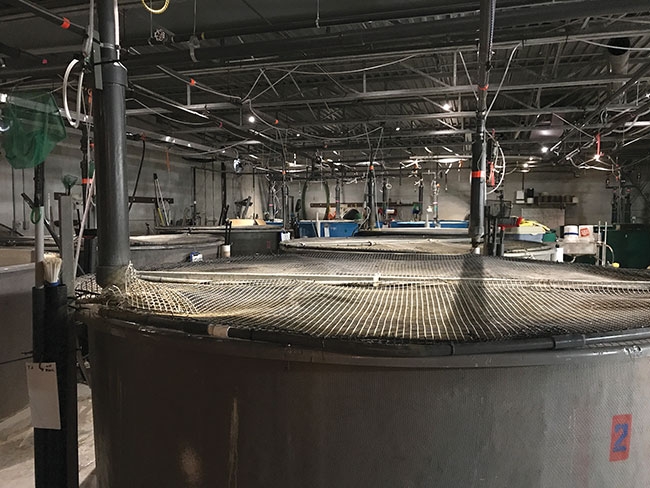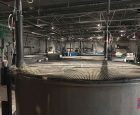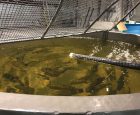
Features
The air they breathe: Practical oxygen management and use, part I
Lack of oxygen caused by improper use of oxygen and oxygen systems is one of the highest causes of human error mortalities in aquaculture, even despite the use of sensors and automation.
May 15, 2019 By Ron Hill

Proper management and maintenance of oxygen systems is often lax, and workers’ use of oxygen is often poor and inefficient. Proper management of oxygen systems at the ground level will make the oxygen system reliable and efficient, saving the farm money.
Oxygen and flow
How a farm chooses to supply oxygen will depend on the farm itself and the requirements of the fish reared. Whatever the method may be, some basic management principles apply.
For the technician, oxygen system management starts at the tanks. Proper water flow in the tank is the first consideration, even before oxygen is added. The flow must be adequate to provide appropriate water turnover to the fish, and give proper waste flushing, but also to properly distribute the dissolved oxygen in the tanks. Setting a proper spin (in circular tanks) and avoiding dead/low oxygen zones will distribute oxygen throughout the tank. Some water should also be injected low in the tank for this same reason. Maintaining proper flow rate and water direction is essential and often overlooked day to day.
In-tank oxygen management
Regardless of delivery, the oxygen needs of the fish will determine the amount of oxygen provided.
Oxygen is expensive to produce and purchase. It is essential to strike a balance between providing enough oxygen for fish, plus a safe amount of cushion, and the need to not waste oxygen.
Rather than managing the oxygen flow meter and the litres per minute, the technician sets the oxygen flow by monitoring the level of oxygen in the tank through a sensor, keeping oxygen to a desired saturation level. Once the fish are in tank, adjusting the oxygen requires finesse and patience.
Adjustments to the oxygen require time to show their full effect, such that, once the oxygen has been adjusted to a tank, the new level will not be completely apparent until there has been a full water exchange.
This delay in reading the new levels after an adjustment is often problematic, especially for novice technicians who often find themselves overcorrecting. Overcorrecting when turning down the oxygen can lead to oxygen deprivation if the tank isn’t continuously monitored. Continually overcorrecting and failing to wait for the oxygen to rebalance means time and oxygen wasted, and the oxygen level in the tank swinging from too high to too low, causing stress to the fish. Manual adjustments to oxygen (aside from emergency situations) should be made slowly, in small increments. When lowering the oxygen, it is most important to make small adjustments. It is better that the oxygen is too high than too low.
In-tank maintenance
Regular maintenance of the oxygen system is the best way to ensure it works when it is most needed. Probes are the essential oxygen monitoring tool and must be kept and maintained with diligence – but beware of putting complete trust in them. Without regular cleaning, calibration and inspection, probes cannot be trusted to give accurate readings.
Even with proper care, probes must be inspected and recalibrated periodically. Regularly test probe readings for automated systems against handheld probes, test handheld probes against each other. There is nothing worse than not having faith in the reading a probe is giving especially when most needed.
Tips and tricks
- Make oxygen and flow changes in the morning so that problem tanks can be addressed throughout the day. Do not adjust down in the afternoon.
- Scrub and test air stones regularly. Stones that sit idle in a tank will foul, blocking the pours and thereby blocking the oxygen flow.
- Change the membranes and electrolyte regularly in probes. Crystals and creases seen in the membrane indicate the probe needs renovation.
- Automated oxygen systems and sensors still require humans to maintain them. Inspect the controls and set points and alarm points at the end of every shift.
Print this page
Advertisement
- Hatchery hopes circular tanks will improve sturgeon breeding
- RAStech 2019 debuts as industry predicts promising future for RAS







